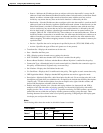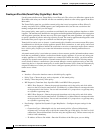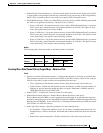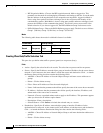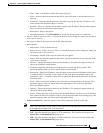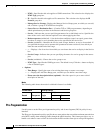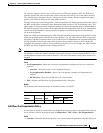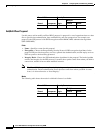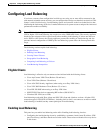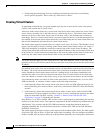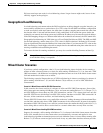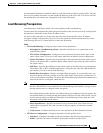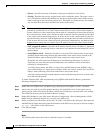
68-21
Cisco ASA 5500 Series Configuration Guide using ASDM
Chapter 68 Configuring IKE, Load Balancing, and NAC
Configuring IPsec
–
Integrity Hash—Shows the hash algorithm that ensures data integrity for the ESP protocol. It
ensures that a packet comes from whom you think it comes from, and that it has not been
modified in transit.
• Add—Opens the Add IPsec Proposal dialog box, in which you can add a new proposal.
• Edit—Opens the Edit IPsec Proposal dialog box, in which you can modify an existing proposal.
• Delete—Removes the selected proposal. There is no confirmation or undo.
Modes
The following table shows the modes in which this feature is available:
Add/Edit IPsec Proposal (Transform Set)
Use this pane to add or modify an IPsec IKEv1 transform set. A transform is a set of operations done on
a data flow to provide data authentication, data confidentiality, and data compression. For example, one
transform is the ESP protocol with 3DES encryption and the HMAC-MD5 authentication algorithm
(ESP-3DES-MD5).
Fields
• Set Name—Specifies a name for this transform set.
• Properties—Configures properties for this transform set. These properties appear in the Transform
Sets table.
–
Mode—Shows the mode, Tunnel, of the transform set. This field shows the mode for applying
ESP encryption and authentication; in other words, what part of the original IP packet has ESP
applied. Tunnel mode applies ESP encryption and authentication to the entire original IP packet
(IP header and data), thus hiding the ultimate source and destination addresses.
–
ESP Encryption—Choose the Encapsulating Security Protocol (ESP) encryption algorithms
for the transform sets. ESP provides data privacy services, optional data authentication, and
anti-replay services. ESP encapsulates the data being protected.
–
ESP Authentication—Choose the ESP authentication algorithms for the transform sets.
Note The IPsec ESP (Encapsulating Security Payload) protocol provides both encryption and
authentication. Packet authentication proves that data comes from whom you think it comes
from; it is often referred to as “data integrity.”
Modes
The following table shows the modes in which this feature is available:
Firewall Mode Security Context
Routed Transparent Single
Multiple
Context System
• — • ——



